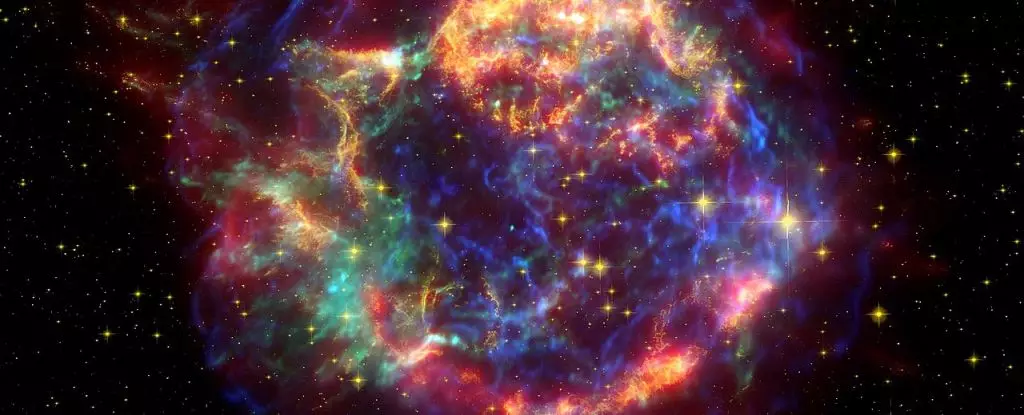Cosmic-ray electrons have long puzzled scientists with their immense power and elusive origins. However, recent groundbreaking research has shed new light on this enigma, thanks to the CALorimetric Electron Telescope (CALET) aboard the International Space Station. Since 2015, the CALET Collaboration has collected an astonishing dataset of over 7 million particles, providing crucial insights into the source of these energetic cosmic rays.
The most thrilling aspect of this research lies in the discovery of cosmic-ray electrons at the highest energies ever recorded. Astrophysicist Nicholas Cannady, a member of the CALET Collaboration, describes their findings as potentially groundbreaking. If confirmed, these high-energy electron events could serve as a “smoking gun” for concrete evidence of a nearby source. With candidates surpassing 10 teraelectronvolts, the implications of this discovery are profound.
The existence of energetic cosmic rays was first detected more than a century ago, yet their origins have remained elusive. These particles, primarily atomic nuclei but also protons and electrons, travel through the universe at nearly the speed of light, defying expectations of their power. Scientists believe that, like other energetic phenomena, cosmic rays originate from potent sources. The leading explanation thus far involves supernova remnants, where particles are accelerated to high speeds. Nevertheless, alternative sources, such as the annihilation of dark matter, cannot be discounted. Understanding the origin of cosmic rays has become a crucial pursuit for physicists.
Capturing cosmic rays presents significant challenges. On Earth, these particles collide with atmospheric atoms, resulting in cascades of secondary particles that we can observe. However, differentiating cosmic rays from the resultant shower has proven difficult. Additionally, high-energy electron detectors are susceptible to interference from rapidly moving protons, complicating accurate measurements. Thankfully, the CALET experiment on the International Space Station offers a unique advantage—the direct detection of cosmic rays at high energies.
Previous studies using CALET allowed scientists to detect cosmic rays up to 4.8 teraelectronvolts. However, the recent breakthrough involved developing new methodologies to filter out errors caused by interfering protons. Leveraging CALET’s vast pool of data, the team managed to identify electron cosmic rays at energies as high as 7.5 teraelectronvolts. This significant increase in the energy range of detected cosmic rays provides invaluable data for further analysis.
Interestingly, the research team discovered that the incidence of cosmic rays does not decline as energy levels increase. On the contrary, there is a surprising indication that cosmic rays may even increase at the highest energies. These findings challenge prior assumptions and raise intriguing questions about the origins of these particles. The sheer magnitude of energy detected suggests that the sources of cosmic rays are relatively close to Earth. Supernova remnants within proximity align with the detection of some of the highest-energy cosmic rays in the dataset. Continued research and observation hold promise for unraveling the true origin of cosmic rays.
The profound implications of the CALET observations extend beyond detecting cosmic rays. Physicist T. Gregory Guzik, leader of the US branch of the CALET Collaboration, highlights the exciting possibility of measuring matter from specific nearby supernova remnants right here on Earth. This tantalizing prospect could provide unprecedented opportunities for studying and understanding the intricacies of these cosmic phenomena.
The recent findings from the CALorimetric Electron Telescope have provided scientists with a thrilling glimpse into the mysterious world of cosmic-ray electrons. With the detection of high-energy electron events and the narrowing down of potential sources, the quest to unravel the true origin of cosmic rays is steadily progressing. As researchers continue to explore this captivating field, new discoveries await, bringing us closer to understanding the cosmic forces that shape our universe.


Leave a Reply